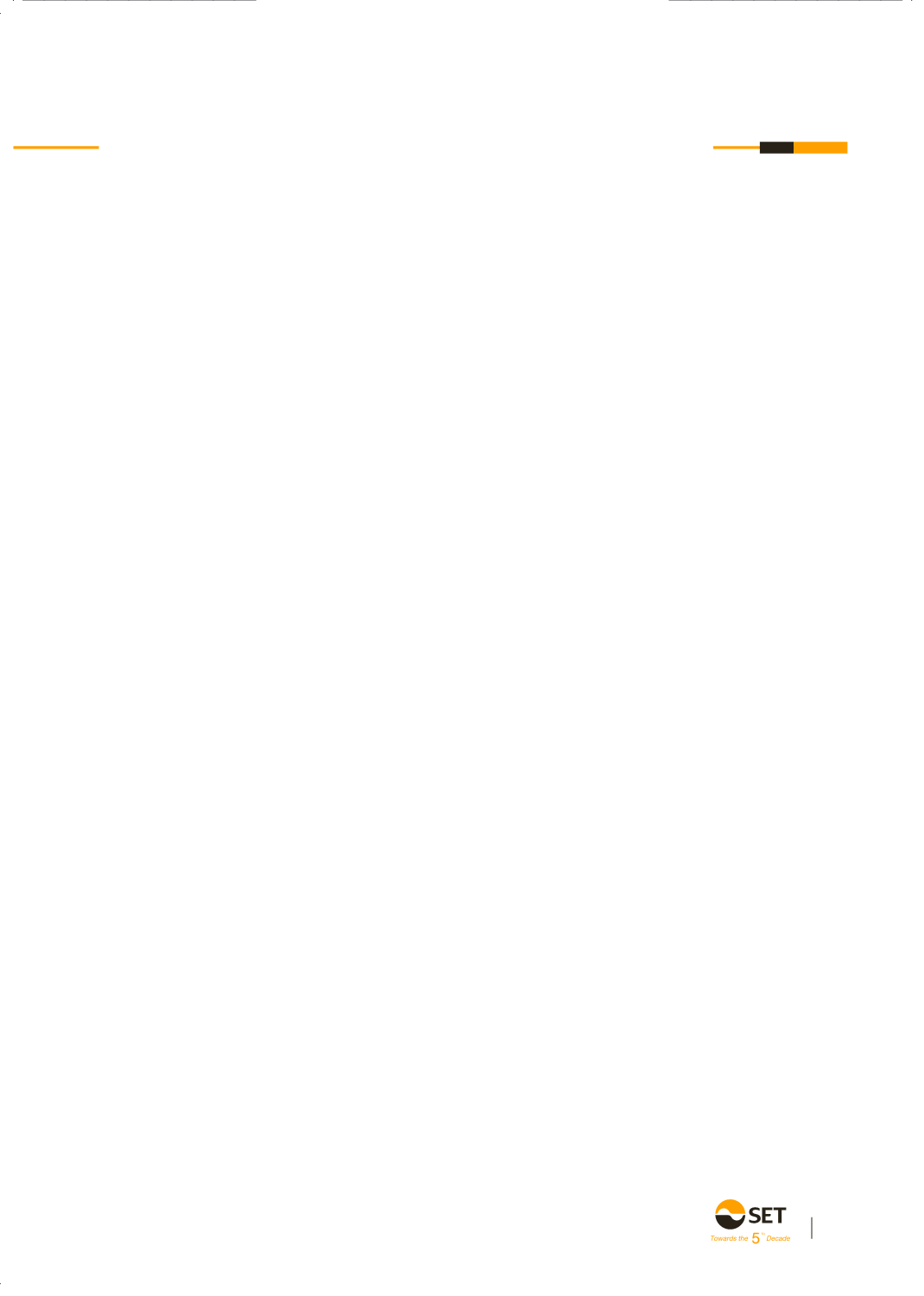

Enterprise risk management
87
The Stock Exchange of Thailand (SET) uses an enterprise-wide riskmanagement framework to
ensure it can manage risks it faces effectively, in line with the corporate policy and international
standards. SET’s risk management covers three levels of key risks: strategic risk, business risk and
process risk, as follows:
Strategic risk
SET focuses on strategic risk in its strategic direction towards
2020 as well as annual strategic planning and budgeting. SET
adapts its risk management to meet the objectives of strategic
themes and plans, including its new equity clearing and depository
systems launched in August 2015.
Business risk
SET oversees and manages business risk, which covers key
risks for operating business, in line with those of leading stock
exchanges. SETmonitors andmanageshigh level risksby identifying
key risk indicators to monitor and adjust risk mitigation plans
accordingly. Key business risks to be managed are:
Credi t r i sk (Counterpar ty or c lear ing and
settlement-related risk)
ThailandClearingHouseCo.,Ltd.(TCH),ascentralcounterparty
for SET and Thailand Futures Exchange PCL, strictly imposes
risk management measures and has reviewed them continuously.
In 2015, TCH reviewed minimum clearing fund contribution to
cover risk incurred from increasing transactions by members.
TCH has also adopted international standards, such as the
Principles for Financial Market Infrastructures (PFMI) of the
International Organization of Securities Commissions (IOSCO),
and European Markets Infrastructure Regulations (EMIR) of
the European Securities and Markets Authority (ESMA). To
stay in compliance with amended international standards and
maintain domestic and foreign investors’ confidence in our
market, highlights of 2015 include restructuring TCH’s capital
by increasing registered capital from THB 100 million to THB
600 million and reviewing rules and regulations, as well as using
risk management measures related to clearing and settlement
of agricultural derivatives products in order to support these
new products.
Critical system disruption and business interrup-
tion risks
SET constantly assesses, monitors and manages risks
that may seriously affect its computer systems. These include
standard incident management, escalation procedures, incident
reports, root cause analysis and solution-finding in order to
provide continuous service.
SET has a highly efficient business continuity plan (BCP)
to ensure that its missions and critical business activities can
be carried out without interruption in the event of unexpected
crises. In addition, BCP-related documentation is regularly
reviewed and updated. SET continues to conduct annual BCP
exercise for related stakeholders in the Thai capital market to
validate SET’s adequacy and readiness of business continuity
management program.
Investment risk
SET’s investment portfolio, managed by the Investment
Committee (IC), operates under investment and strategic asset
allocation policies as approved by the SET Board of Governors
(BoG). These policies are reviewed quarterly.
SET monitors the investment risk status and reports to the
BoG, Risk Management Committee and IC to ensure that risks
are within acceptable levels.


















